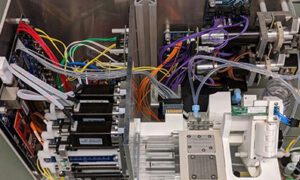Are you ready to power up and embrace the electrifying future that lies ahead? As our world continues to face the challenges of climate change and the depletion of fossil fuels, it’s become evident that a shift towards electrification and renewables is not only necessary but also downright exciting. From electric cars zooming silently on our roads to solar panels glistening on rooftops, this comprehensive guide will take you on a thrilling journey through the dynamic landscape of clean energy. Get ready to plug into The Energizing Future – where we’ll explore everything from cutting-edge technologies to practical tips for living sustainably in an electrified world. Let’s ignite our curiosity, charge up our knowledge, and set forth toward a brighter tomorrow.
The Benefits of Electrification
Electricity is the lifeblood of our economy and our planet. We can’t live without it, and we need to keep getting more and more of it from sustainable sources.
From transportation to homes, businesses, and even farming, electricity is essential for every aspect of modern life. That’s why promoting renewable energy is such an important part of the electrification revolution.
Renewable energy technologies are growing ever more affordable while their environmental benefits continue to grow. That means that more and more people all over the world are looking to switch to renewables for their power needs. Here are some of the major benefits of electrification:
Reduced CO2 Emissions: Electricity is responsible for close to two-thirds of all CO2 emissions in humanity’s CO2 footprint. By switching from fossil fuels to renewables, we can drastically reduce those emissions. In fact, much of Europe’s grid now relies on Renewables as a percentage of total energy production – demonstrating just how quickly this transition can happen! Cleaner Air: Burning coal produces huge amounts of soot and otherPM2.5 pollutants that contribute significantly to air pollution problems around the world. Switching over completely to Renewable electricity would erase that pollution problem altogether! More Jobs: Fossil fuel-powered plants require an endless supply of new oil or gas wells – which means there’s never really been a net increase in jobs in those industries. With renewable energy becoming the dominant power source on earth, jobs in related sectors will proliferate. Sustainably produced electricity is now the global standard, so businesses of all kinds will be in demand. Reduces Global Warming: Burning coal and other fossil fuels releases greenhouse gases into the atmosphere, contributing significantly to climate change. Solar and wind power produce zero emissions, meaning they play an important role in mitigating climate change.
These are just a few of the many benefits of electrification. If you’re interested in learning more, you can check out our FAQ on the topic or explore some of the more detailed studies available on the web.
The History of Renewables
Renewable energy has come a long way in its short history. At the beginning, solar and wind were barely able to compete with traditional sources of energy like coal and oil. But over time, technology has improved and their advantages have grown.
Today, renewables are capable of supplying a large portion of the world’s electricity. Solar and wind are the most common types of renewables, but there are also other types that are growing more popular, such as hydroelectricity and biofuels. The key to unlocking their full potential is to continue developing new technologies and expanding into new markets.
What Kind of Renewables are Available?
Renewables are available in a variety of forms. solar, wind, hydroelectric, and geothermal power are all renewable sources of energy. Renewable resources provide ecological stability and can bolster diversity in the electricity supply. Solar and wind power have the potential to shrink grid size as well as emissions while hydroelectric provides dispatchable power on demand without GHG emissions. Geothermal has the potential to mitigate climate change by providing baseload power that is emission-free and storage based which could reduce carbon emissions through using variable sources like renewables.
How Can I Incorporate Renewables Into My Home or Business?
Renewables are a great way to power your home or business. There are many different types of renewables, so you can find one that works best for you. You can install renewable energy yourself or work with a company that does installations.
Renewables include solar, wind, hydroelectricity, and biomass. Solar panels use sunlight to generate electricity. Wind turbines use the wind to power themselves. Hydroelectric dams create electric power by moving water through turbines to create kinetic energy. Biomass is any plant-based material that can be converted into energy like coal, oil, and natural gas.
Conclusion
The electrifying future of renewables is here, and it is only going to get better from here! With innovative technologies like electric vehicles and solar panels continuing to improve, the future looks bright for those looking to embrace renewable energy sources. Whether you are a homeowner planning on upgrading your home solar panel array or an entrepreneur mulling over whether to start selling electric cars, this comprehensive guide will provide everything you need to know about the electrifying future of renewables. Thanks for reading.



































